-
Posts
4,734 -
Joined
-
Last visited
-
Days Won
118
Content Type
Profiles
Forums
Resource Library
Events
Gallery
Blogs
Store
Community Map
Posts posted by Mayner
-
-
What's also interesting are the tankers in the background. Although mainly hidden they are not the same as the other you posted just above in #52, they are cradled differently and not just one but both that you can see on the rake. Tankers are being discussed on another contemporaneous thread for anyone who's interested
One of the tank wagons in the background looks like a CIE built bitumen tank wagon with an anchor mounted tank possibly dating from the early 1960s
 In loose coupled days bitumen traffic appears to have been shipped as individual wagon loads to railway goods yards and private sidings.
In loose coupled days bitumen traffic appears to have been shipped as individual wagon loads to railway goods yards and private sidings.-
 1
1
-
-
The ex GSWR12ton brakes may have been retained for use with G Class locos on the Loughrea and possibly the Castleisland/Fenit branches. I am not sure if the Loughea branch brake survives, the van was partially restored by Westrail the bodywork later burnt by vandals.
One of the interesting features of these vans was that like the GWR Toad vans in the UK the guard had to go out on to one of the verandas to apply the brake.
-
I decided to try out I P Engineering Tralee & Dingle inspection railcar while looking at a possible change in modelling direction. http://www.ipengineering.co.uk/page4.html the kit is in laser cut ply construction and includes wheels, motor and detail parts to complete a working model.
Body assembly is relatively straightforward with accurately cut ply parts and some nice whitemetal castings.
Although the instructions recommend superglue, I used PVA for assembling the ply parts. The corner clamps (Micromark) are essential for supporting the joints while the joints are curing.
Roof construction is similar in principal to full size traditional carriage construction with the roof boards supported by ribs.
The roof is typical of the semi-elliptical roof profiles introduced by companies such as the LNWR, LSWR & MGWR of the early 1900s
The planking on the coved section immediately above the gutter is fixed first and allowed to cure before filling in the arc section in the centre.
I P recommend Kleenex tissue fixed with PVA to represent the canvas roof covering, model aeroplane glider tissue fixed with dope is probably a better alternative.
Its nearly a shame to hide the interior planking.
Assembled body posed on layout. I am planning to build my own chassis sub frame rather than rely on the whitemetal axleguards supplied. I am planning to build a separate chassis/subframe to support the running gear rather than rely on the cast whitemetal axle guards supplied but that's another days/years work
-
Happy Birthday Patrick. Good time of the year for parties, on reflection any time of year is a good time to party

-
Just a thought, that Duckhams wagon looks a bit like the tanks that run on the weedspray train. They are on demountable ISO frames.
Another little surprise it looks like the weedspray train tanks have Bulled triangulated ISO demountable frames.

It looks like CIE may have simply chopped off the running gear from some 1950s era anchor mounted tank wagons and grafted ISO cuplock pockets on to the ends of the existing underframes. The original wagons were fairly modern in design with welded tanks and anchor mounting compared to the Oil company owned wagons, but fairly low tank capacity.
CIE appear to have built relatively few tank wagons in the 50s most seem to have been originally for bitumen or industrial alcohol traffic from Ballina, Derry or Dundalk.
-
There seems to be at least 3 variations of the CIE 26695-26772 series CIE-Burmah tank wagon that I can see. The tank in the first image is shorter than the 20' wagon base with 12 support brackets where as the tank in the second image seems to be the full length of the 20' wagon with 13 support brackets. The tank in the 3rd image is similar in length to the 1st but with a different support cradle. Would anyone have any drawings of these wagons?
[ATTACH=CONFIG]16532[/ATTACH]
[ATTACH=CONFIG]16533[/ATTACH]
[ATTACH=CONFIG]16535[/ATTACH]
Not sure where I got these images from so I hope the photographer doesn't mind me using them.
Most of the IE store oil and molasses tank wagons were originally built for specific traffic flows such as Irish Cement, Quigley Magnesite, Burmah Oil and possibly Texaco. Many of these wagons basically became surplus to requirements during the 1980s with the ending of the Irish Cement and Quigley Magnesite traffics.
The wagons were built in small batches 26570-89 Irish Cement 1966, 26628-31 Irish Cement? 1967, 26636-52 Quigley Magnesite?, 26723-26728 Burmah Oil 1972, 26720-26740 1978.
Most of the latter tank wagons including 26640, & the “Burmah” tank wagons were built on the standard 20’ container wagon underframes complete with cuplocks.
Originally the store oil wagons were numbered in the Departmental wagon number series similar to 629A, 26640 and 26748 appear to be ex-traffic tank wagons converted to carry store oil.
26748 is a bit of a mystery as 26740 was the highest numbered tank wagon recorded by Doyke and Hirch in Locomotives and Rolling Stock of IE & NIR 1987.
26748 appears to be one of the earlier Irish Cement tank wagons with an anchor mounted tank and no cuplocks. It’s possible that IE may have re-numbered some of the 26570 series wagons following a change in use from carrying heavy fuel oil to diesel or molasses.
Funnily enough I have a weight drawing of a CIE Fuel Tank wagon but it has the long tank barrel with 13 ribs similar to 26640
-
Hi All
I picked up a copy of 'Scratch-Building Model Railway Locomotives' by Simon Bolton, from Diarmuid (DermoBookman) at the last Bray Show of 2014.
Interestingly the author uses a J15 locomotive as the main example throughout the book, the loco is not dissimilar to our J15, and with a bit of drawing modification one would have a fantastic set of instructions to scratch build a J15. The book only deals with the build of models with a slight introduction to the tools used- soldering technique and painting is not included, although in the construction soldering hints are suggested, and when not to- recommending using glue. Great pictures and easy to follow text with a lot of tips n tricks.
Definitely a very handy addition to the model building reference bookshelf and perfect for a novice teetering on the edge of opening that etched kit-bought 10 years ago, and melting solder.
Irish J15;- http://irishrailwaymodeller.com/content.php/327-DSER-NO-15-%28RPSI-no-461%29
Eoin
A loco like 461 or one of the WLWR 0-6-0s would be a better choice than a J15 for a first scratch build. The curly Beyer running plate on most small GSWR makes building the locos especially tricky.
Drew Donaldson used to use a jig or fixture for forming GSWR valence & running boards. The SSM J15 valence is designed with a sacrificial reinforcing strip that keeps everything in line until the curves in the running board are formed.
-
Actually I was wrong with this assumption. Except for the Fina three packs (possibly more) many of the Bachmann three packs come with two different tank wagons with cables ties, one with a wide filler port on the top of the tank and two with a smaller one. Been going back over the thread to try to figure out what was prototypical of the early wagons but if anyone can offer any comments to clarify this, that would be extremely helpful.
Just dug out a copy of the 4mm Wagon Part 2 by Geoff Kent of Dunwich fame mainly UK but a complete chapter on modelling tank wagons including converting the Airfix/Dapol ESSO tank wagon into a class A & a photo of a new tank wagon supplied to Shell-Mex Ltd for use in Northern Ireland.
Tank wagons with a hand wheel on the top like the http://www.ehattons.com/60950/Bachmann_Branchline_37_672_Pack_of_3_14_Ton_tank_wagons_in_British_Tar_livery_weathered/StockDetail.aspx or Dapol ESSO tanker were used for heavy oil or even molasses. No hand wheel and a vertical tube petrol http://www.bachmann.co.uk/image_box.php?image=images1/branchline/37-684.jpg&cat_no=37-684&info=0&width=650&height=417.
The size of the dome may be more to do with the age of the wagon than its function. It had to be big enough for a man to get through hopefully with some form of rescue system
Irish private owner tank wagons appear to have been mainly standard UK Railway Clearing House (RCH) designs, standard RCH tank wagons also appear to have been imported for bitumen traffic by CIE before developing its own tank wagon designs in the 1960s. Some private owner wagons found their way into departmental use in the 1960s and 70s including a complete rake of Caltex/Texaco wagons on the North Wall-Inchacore oil trains.
Texaco anchor mounted tank wagon last used North Wall-Inchacore fuel oil train dumped Dardannelle Sidings Caltex lettering grinning through
A few private owner tank wagons found their way into preservation, though a large number were stored/dumped in the Dardnelles Siding East Wall before the yard was re-modelled in the early 2000s .
Initially Class A tank wagons were painted buff or light stone with a red horizontal band around the centre of the tank barrel in a similar style to the Ammonia tank wagons. Silverette or silver grey replaced immediately before WW11. The red band moved down to the solebars, from the 60s onwards "dove grey" replaced silver.
The wagons evolved through several stages up to the introduction of the ESSO 35T GLW tank wagon in the late 1950s.
Railway Clearing House (RCH) pre-1927 cradle tank wagon with cable stays The Irish Shell wagon is for Class A with vertical syphon pipe for unloading visible at the top of the tank.
RCH Post 27 cradle tank wagon with horizontal tie bar between butresses 210 was a bit unusual with the tank divided into two compartments possibly to carry petrol & paraffin or TVO. The livery is still the old style with the horizontal red line in the middle of the tank.
CIE 26570 series tank wagon with anchor mounted tank Introduced during WW II anchor mounted tanks were the next phase off tank wagon development. CIE & Caltex appear to have imported anchor mounted tank wagons from the UK on traditional RCH style unfitted underframes (hand brake only) up to the early 1960s.
The 26570 series built for Foynes-Drogheda & Castle Munget oil trains represented a change in operating pattern from individual wagon load to block train operation for a single large customer in this case Irish Cement. These wagons ran on a 20' 11'wb underframe with a capacity of 4760gal heavy fuel oil.
CIE 26695-26772 series CIE-Burmah tank wagon Introduced in the distinctive Burmah livery in 1972 or Cork-Limerick Oil traffic four wagons appear to have been painted blue for class B traffic and 2 in an interesting variation of the Class A dove grey and red scheme similar to the Hornby model http://irishrailmodels.com/2012/01/27/hornby-burmah-oil-tanker-r792/ While the chassis of Dapol tank wagon can probably be shortened to represent the CIE tank wagons, none of the British tank wagons are really suitable.
-
I finally got around to publishing a Facebook page https://www.facebook.com/jmdesignmodelrailways.
-
Dive, you could replace the older pizzacutter type wheelsets with code88 or similar which would be readily available stateside in packs of 50.
http://www.bobthetrainguy.com/rapido-ho-scale-33-code-88-fine-tread-wheels-50-pack/
Great value, and you can resell any of your old ones :-)
Tempting but it would be safest to check that the diameter of the Lima OO gauge wheels and the HO scale wheels and axle lengths match before buying.
A 33" American freight car wheel works out at approx. 9.6mm, the typical CIE 3' coach wheel at 12mm in OO which would lead to problems in matching coupling and ride heights.
Hornby or Bachmann wheels may be too large in diameter as it looks like Lima OO stock was designed around an 11mm diameter wheel.
Markits produce replacement wheels for Lima http://www.markits.com/MARKITS_Price_Guide_2013_09.pdf
MRJ11/b-3Rmfd 11mm T/Disc 24.5mm Axle ('LIMA') £2.00
MRJ12Do/b3Rmfd 12mm T/Disc (LIMA) 24.5mm Axle £2.00
These may be available through DC kits or other UK suppliers
-
-
Going off thread a little some of the older companies had nicknames the DSER was known as the Slow & Easy & the unfortunate SLNCR The Sow Lazy and Never Clean. Wonder if there were nicknames for the liveries. The Waterford and Tramore seems to have remained in an 1850s time-warp with ancient but highly polished locos and colour coded 1st & 3rd Class coaches. In the 19th Century wit the exception of the WLWR most companies seem to have some variety lined green locos and "lake" or dark red coaches. In the early 1900s loco lining became more simplified, the Midland tried Royal Blue locos with blue and white coaches, green gave way to lined black on the Donegal, DSER, GNR (I), GSWR, Midland, SLNCR. Grey replaced black on the GSWR during WW1 and became the standard for GSR & CIE steam locos and now IE 071s. Most companies stuck to some form of red for coaches.
The DNGR stagnated & stuck with LNWR "Plumb & Custard" for its coaches until closure, the NCC followed on where the WLWR left off following Midland (UK) and LMS practice in terms of locos stock and livery under LMS & BTC management until subsumed into the UTA.
For a time Donegal even painted coaches its coaches black before adapting the highly colourful "Geranium Red for its loco with red and cream (Blood & Custard) for railcars and coaches in the 1930s.
The GNR followed suit with colourful liveries in the 1930&40s with its "Sky Blue"& Red for its top link & U Class locos, with "Oxford Blue" & cream for its buses and railcars.
Unlike the Donegal the Swilly saw its long term future as a road operator and was cutting back on rail operations by the mid 1930s. Despite this steam locos seem to have been well maintained and nicely turned out in lined green up to abandonment of the remaining rail services in 1953, in later years the remaining increasingly shabby coaches were painted grey like the wagon stock.
The Swilly developed a stylised LSR diamond logo in the 1930s that was applied to some of the 4-6-0T, 4-6-2T & 4-8-4T locos and even some of the coaches rather than the L&LSR or L&BER initials.
-
Yes 221Sa was bought in a swap meet in the Hotel Victor near Sallynoggin and a great example of what can be achieved with an indifferent model and a lot of hard work. Although out of my modelling era I could not bring myself to dropping the Sa suffix or re-painting the loco as a B201.
While the re-motored C Class were mainly known for their work on the Dublin suburban, they regularly worked bagged and bulk cement trains between Platin and Dublin, they also regularly worked Dublin-Limerick through passenger services via Nenagh and the Direct Curve, Cement and goods trains in the Limerick area, the Loughrea mixed and even a brief spell in express passenger service between Dublin-Cork. A radical change from their C Class days pottering around in a cloud of smoke on branch line trains and pilot duty.
-
some more photos
Ben
That's one hell of an interesting photo 984 is a Class A tank wagon probably used to carry petrol. A hose is being used to syphon out the contents into the road tankers by the signal cabin.
Bitumen tank wagons have an insulated tank barrel hidden by sheet metal cladding, with flat or slightly coned ends like the wagons in the Paul Burnett photos http://paulbartlett.zenfolio.com/essobitumenvb/h3c469d01#h3c469d01. The ESSO tank wagons were basically the first modern design of tank car built in the 1950s made redundant with the introduction of 35T & 100T air braked tank cars in the mid 1960s.
CIE introduced its own design of saddle mounted bitumen tank wagon for County Council traffic based on the then standard 10' wb unfitted underframe in the late 50 early 60s.
Earlier bitumen tank wagons were built by Charles Roberts and other companies in the UK based on traditional tank wagon design with cradle mounted tanks.
The tank wagons imported from the UK in the late 60s were owned by ESSO and were built by Charles Roberts in the late 50s. The most noticeable visual differences from the original was the fitting of spring dampers and later the fitting of a reinforcing plate between the tank barrel and solebars. CIE may have had to widen the underframe by up to 6" to run on the Irish gauge, the Airfix/Dapol underframe works fine for OO but needs widening by 2mm (6") for 21mm gauge
-
http://catalogue.nli.ie/Record/vtls000304941
Are these the ones John?
The wagon on the left looks suspiciously like one of these http://paulbartlett.zenfolio.com/essobitumenrebuilt/h1acfab4e#h1acfab4e. The basic design appears to be the same as the Class A tank wagons imported from the UK lagged to carry hot bitumen. The angular shape of the tank barrel is a give away for this type of wagon.
Its possible that the lagging was removed and the wagon(s) converted to carry fuel oil or diesel once bitumen traffic was containerised.
Irish Bitumen had a few internal user tank wagons up to the end of rail operation in its yard near the end of the Alexandra Road tramway.
The tank wagons were on the rail but did not seem to leave the yard. Bitumen was usually transported in ISO tank containers mounted on 4w container flats.
Bitumen traffic was fairly light with one or two wagons attached to the Sligo Oil train and CIE Liner Trains.
-
Looking for old pictures on the net, I came across this familiar-sounding place in Victoria.
[ATTACH=CONFIG]16338[/ATTACH]
Is that mixed standard and broad gauge track?
I managed to fit in some gricing during holidays in NSW & Tasmania but never managed to get outside of Melborne Airport
-
Just like the prototype different makers locos have their own quirks some makes including Bachmann are more high maintenance than those of Japanese or German manufacture.
I have two relatively new Bachmann large scale locos stopped for spare parts while much older LGB locos continue to run reliably. Plastic gears in the final drives on Bachmann large scale locos tend to split from being forced on to splined axles, power pick up design and quality of wiring has not kept up with other manufacturers notably Kato.
-
I would say being a fan of the Midland like John is, it is a model of an 1874 class 8 ton MGWR goods brake van and a very good model of it too in my opinion.
You it the nail on the head Magpie stated about 20 years ago along with a pair of GSR standard opens while living in the Ochiel foothills village of Alva. Interestingly I based the model on a photo and some known dimensions which somehow or other matched up with the late Padraig O'Cuimin's drawing.
Going back to tank wagons it looks like ESSO/CIE had some relatively modern bitumen tank wagons before the traffic was containerised.
At the time I was mainly interested in the old Mex Class A tank wagon, but the wagon on the left looks like a modern bitumen tank wagon.
Does anyone have a clear photo of an ESSO bitumen tank car?
-
221Sa builder unknown from a Q Kits B201
I bought this from the "Belfast Caboose" at a Hotel Victor swapmeet about 15 years ago, really captured the look of these loco in their last years, passed on an MIR 071 detailed and finished to a similar standard.
Chassis from a shortened Athearn F7 one bolster moved back to shorten wheelbase, flywheels removed. I still have to finish re-wiring from a decoder. Walthers/Lifelike Proto 1000 F7 chassis might be suitable.
-
Personally I would have reservations about using Tenshodo SPUD motor bogies in a mixed traffic loco like a B or C Class.
I have tried the bogies in a railcar and a number of small diesels and ended up replacing the units with Black Beetles or my own drives.
The Tenshodo bogie is designed as an underfloor unit for railcars and trams, but will only runs reliably at high speed (small fast running open framed motor & (15:1) gearing) the bogies are difficult to control at low speed and while accelerating have little low speed torque.
The standard Backbeetle is marginally better with a high quality Mashima motor and metal gearing (still 15:1), the 25:1 option would give much better running across a wider speed range.
The other issue with a two power bogie drive is whether to treat each bogie as an independent unit and risk stalling due to poor power pick up or to wire the bogies in series or parallel and risk surging (jerky running) due to the back EMF from the motors when running down hill with a heavy train. I found this to be a serious problem with locos with two motor drive in G Scale whether the motors are wired in series or parallel. This potentially could results in de-railments and accidental uncoupling due to coupler snatching in OO & N.
While I would prefer a centre motor with flywheel drive to both bogies, the Hornby Railroad Deltic is probably the simplest and most cost effective compromise for a batch-built A Class.
-
It looks like Sligo Goods possibly 1980s. CIE introduced tractor and trailers in the 1970s to replace horse drawn trolleys in the for urban deliveries in major cities and towns.
-
-
Worsley Works produce a set of scratch-builder parts for two types of laminate coach the 64 seat Standard Open (one lav) and the main line Brake Standard Open. I built a couple several years ago http://www.worsleyworks.co.uk/4mm/4mm_Irish_Standard_Gauge.htm. Although quite basic the parts build into quite nice coaches. The main challenge is in forming the roof. I widened a Comet roof extrusion, while, Popeye scratch built a roof in plasticard for his Park Royal.
-
Dave
Did you ever come across the all whitemetal version of the A Class?
I built one from a kit suppled by MIR about 20 years ago a very trying experience. The roof & bogie sidefame castings very similar or the same as your loco. The end casting were not quite symmetrical giving the impression the loco was trying to wink.
.png.c363cdf5c3fb7955cd92a55eb6dbbae0.png)

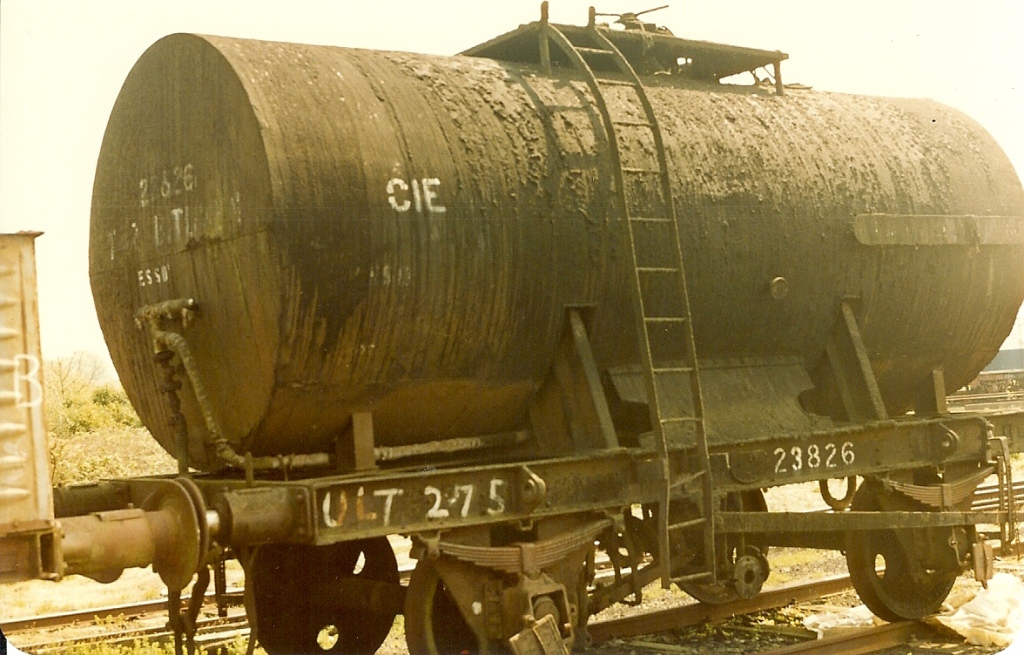

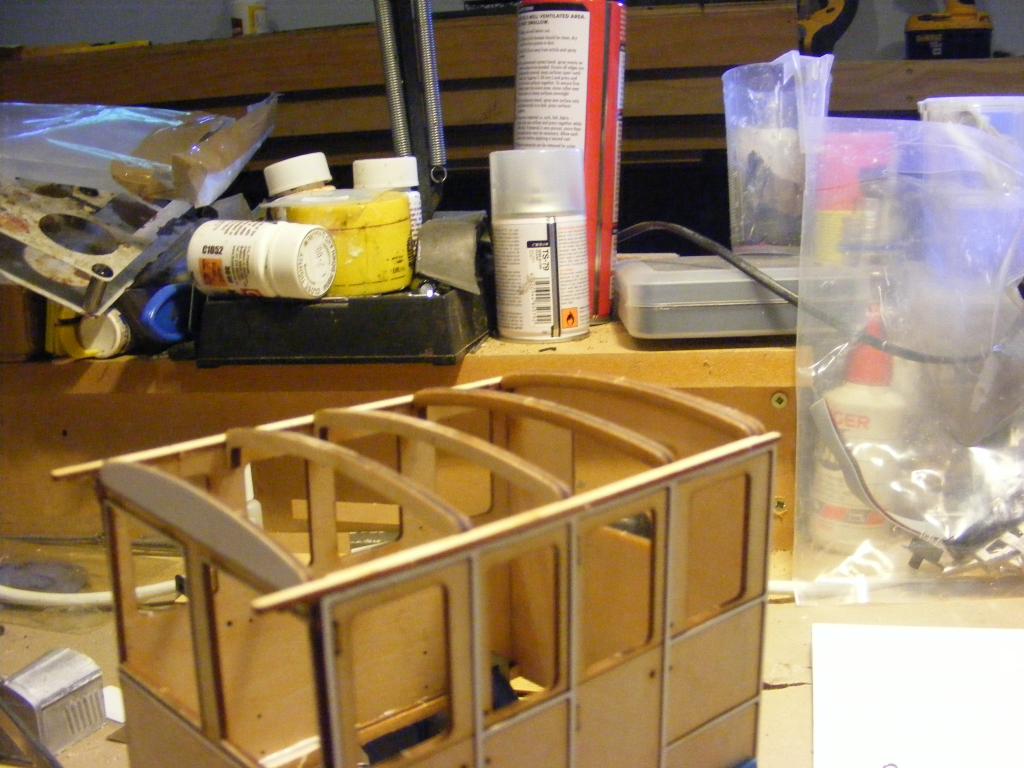
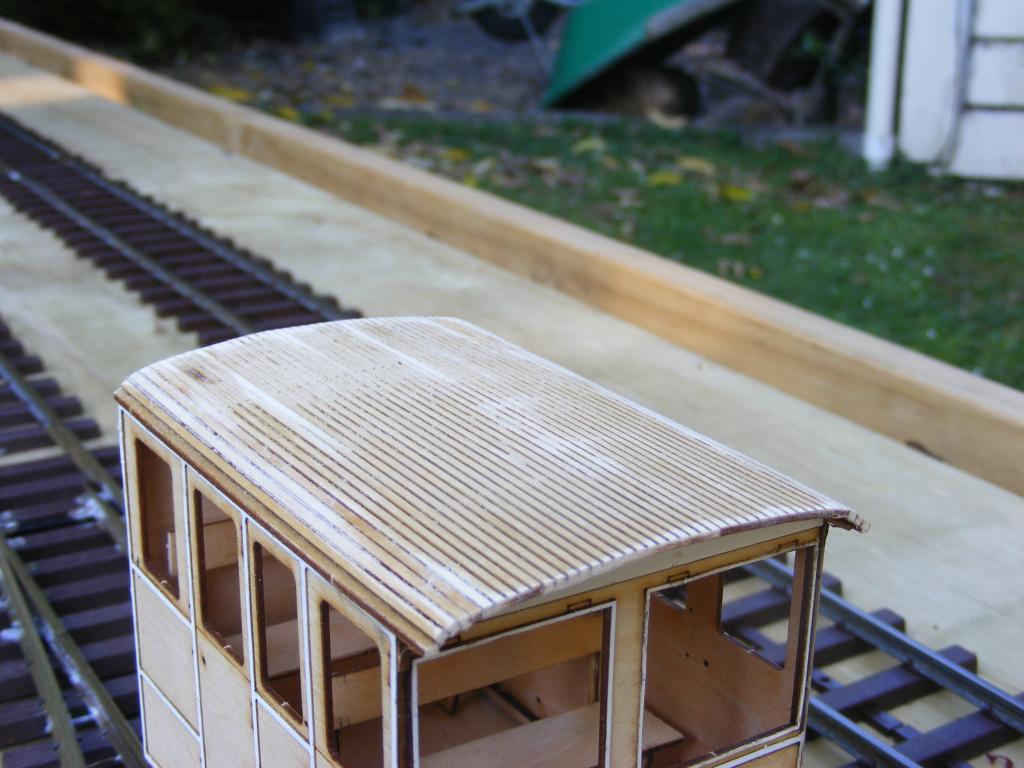
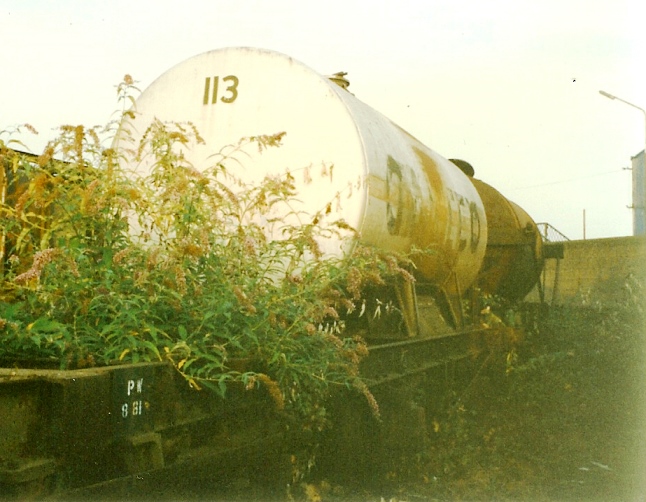
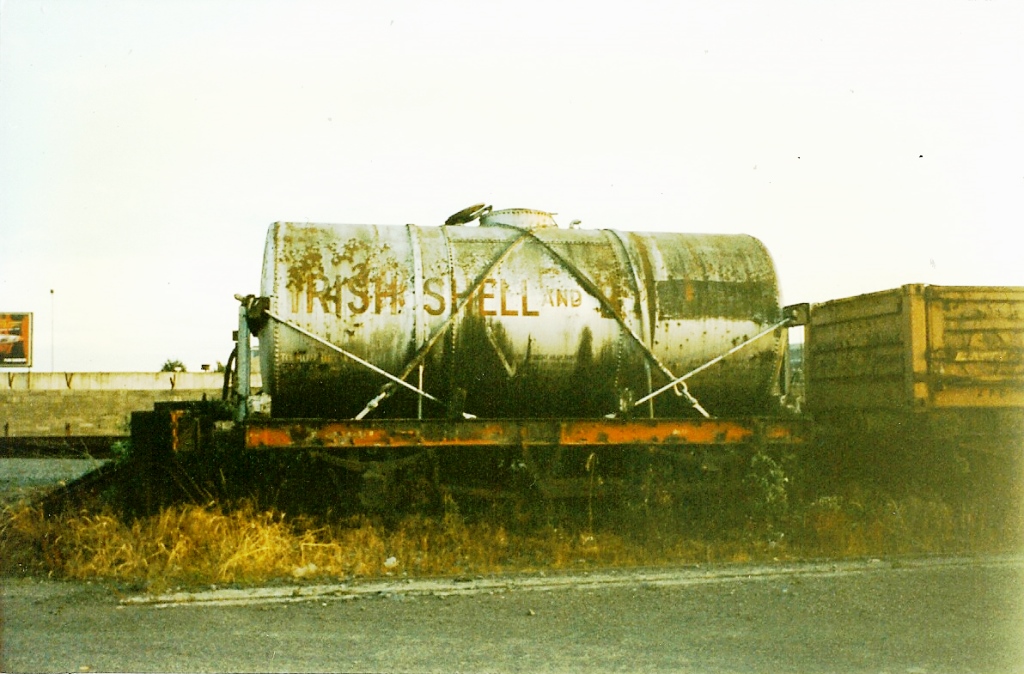
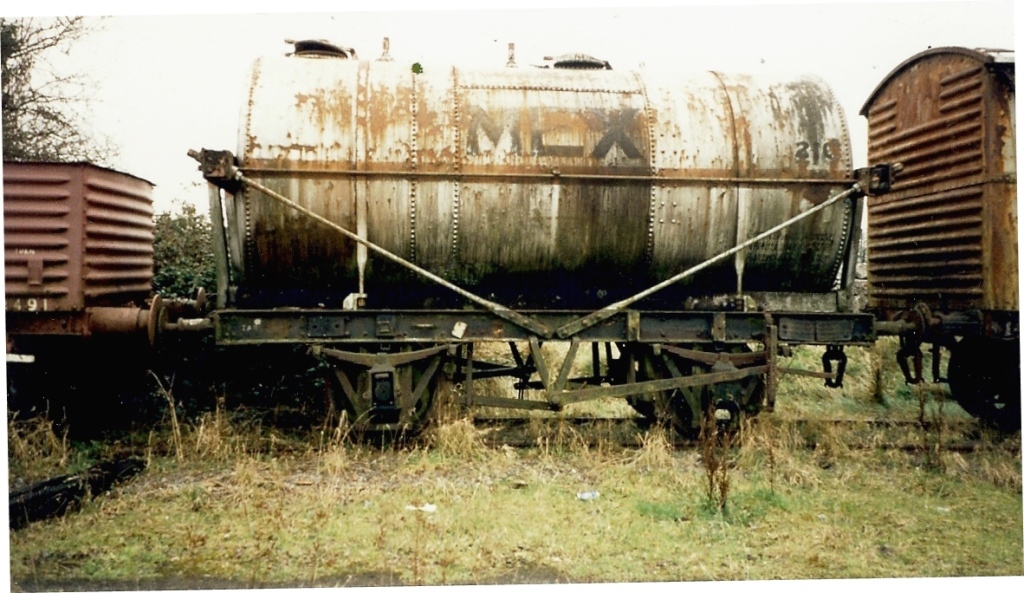
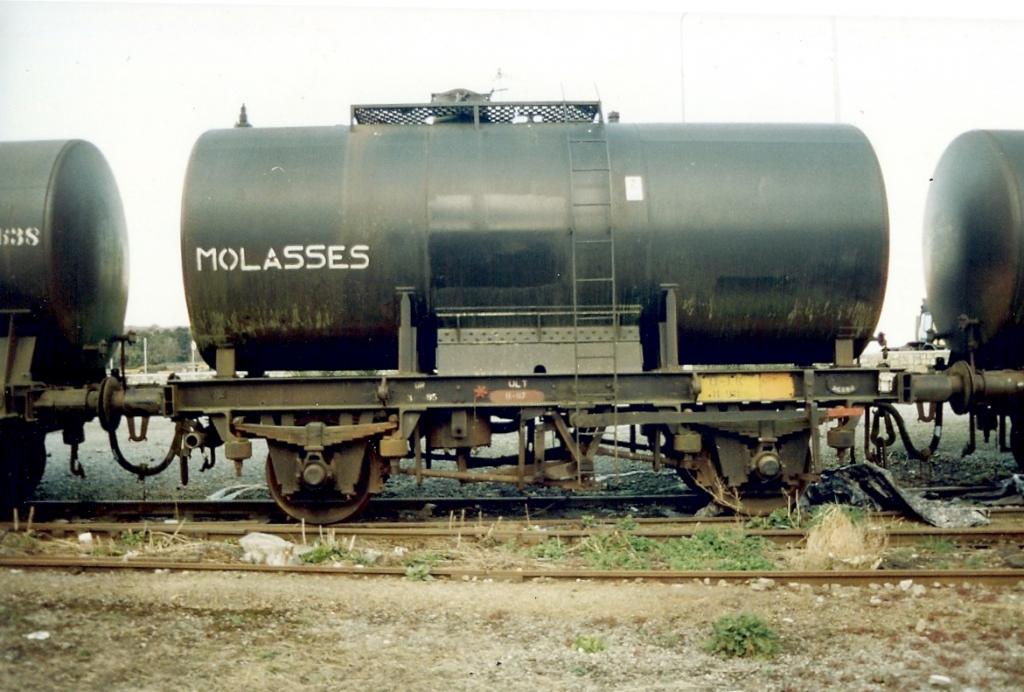
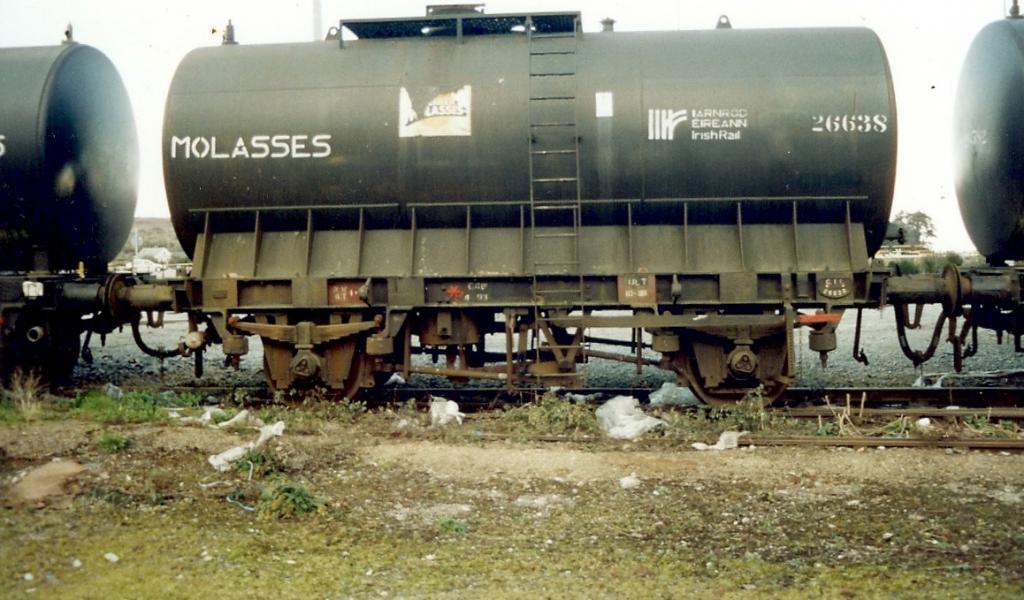
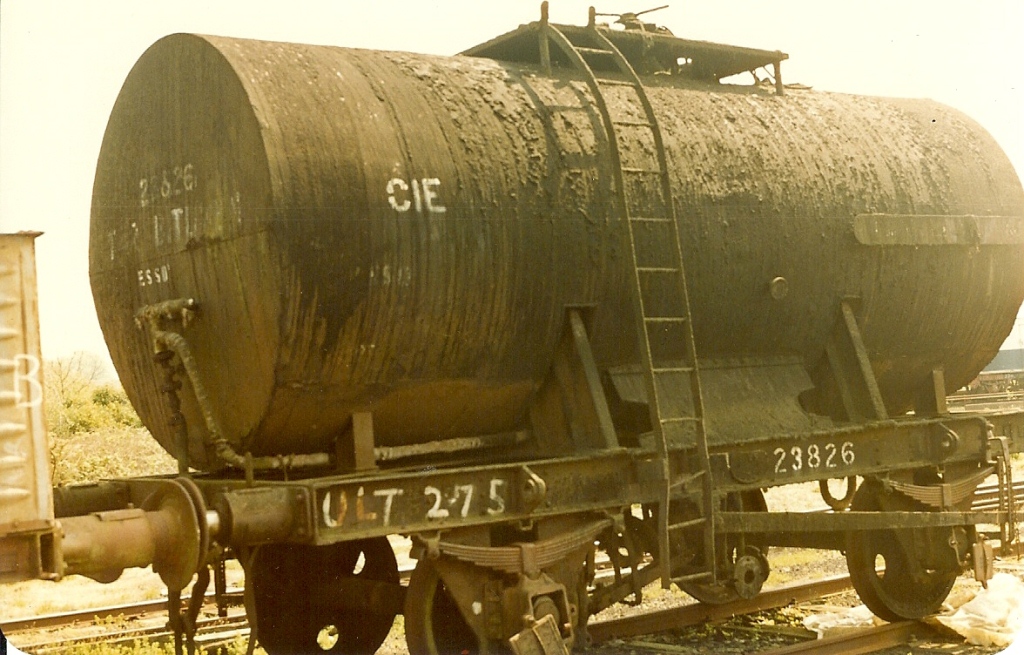
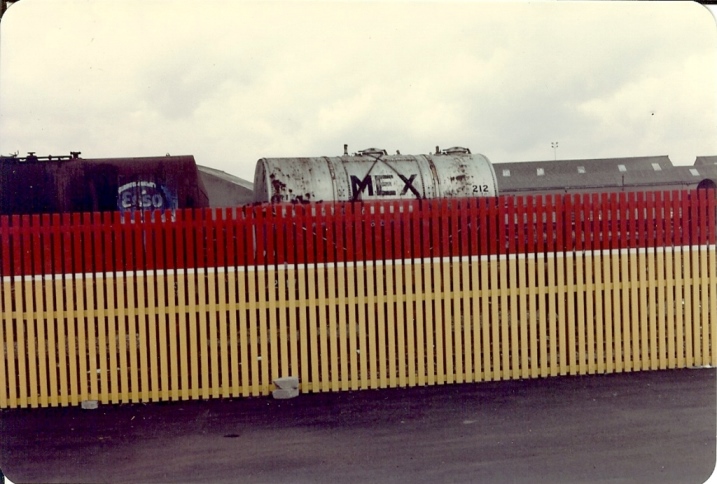




Derby Day Special
in Photos & Videos of the Prototype
Posted
I saw the train passing Hazelhatch at speed quite a sight.